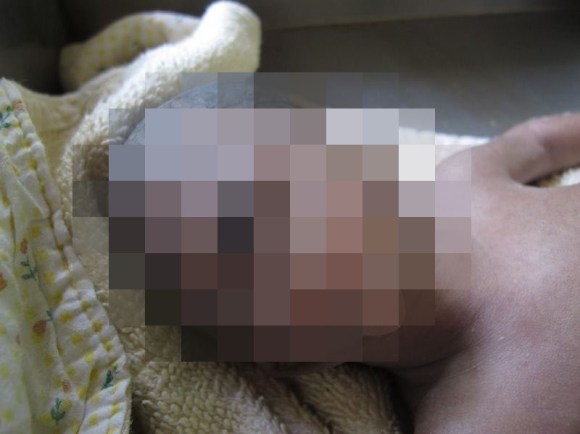
Cyclopia is one of the rarest forms of birth defect in which the baby is born with one or two eyes on the mid-forehead and the nose and mouth often either missing or nonfunctional. Because most babies born with Cyclopia lack the ability to breathe outside the womb, they usually pass away before birth or shortly after.
While most documented cases of Cyclopia have occurred in animals, there have been a few cases of human fetuses being affected.
Recently, photos of a cycloptic baby born in Cameroon earlier this year have been making headlines on the Japanese internet.
We’ve shared the photos below, but be warned that they are graphic in nature and may be disturbing to some viewers. Please click the link below at your own discretion.
While the photos above were originally posted to a Japanese blog, we were able to trace them back to the personal blog of Sean McCaffery, a Peace Corps volunteer stationed in Cameroon.
In a post dated July 26, 2012, Sean writes that he was visiting a local hospital when a nurse called him over to look at what he assumed was a newborn baby wrapped in a towel. As the nurse began pulling off the towel, Sean found that he was right: it was indeed a newborn, however:
“The baby had no mouth, no nose, and one severely deformed eye with two pupils. The nurse continued to pull away the towel, and at first, I was relieved. The torso, arms, and little hands seemed completely normal. But the nurse continued, and then pointed to the genital area of the baby, where I saw the child had both sets of genitalia and, according to the nurse, no anus.“
Sean continues to write that the baby was still alive and began twitching its arms and kicking its legs while he stood there. However, due to the absence of a mouth and nose, the staff could do nothing but wait for the baby to pass away from suffocation.
According to babymed.com, there are several known causes of cyclopia, all of which are related to high amount of toxins in the body during the formation of the fetus.
The mother of this baby was said to live in the bush, many kilometers away from the hospital, and it’s possible that she may have ingested some sort of toxic plant.
In 2011, a cyclopic baby was born in India but survived for only one day, despite having a mouth. Another cyclopic baby was born in India in 2006 and managed to survive for one month.
At the end of his post, Sean shares what he thought after seeing the child:
“The mother, carried and expected and hoped, for this child for nine months. Nine months. American’s can’t wait nine months for anything. We can’t even wait a few months to see the baby when it’s still in the womb. We criticize Africans for having no sense of delayed gratification, but we are absolutely the biggest hypocrites when we do that. Yet, our desire to see the baby isn’t all that selfish. If the equipment, such as an sonogram, had been available in the hospital, it is likely that the child’s deformities would have been seen early on, and that the mother never would have had to carry it to term. Her and her family would have been spared the tremendous emotional shock, disappointment, and shame.”
Source: Peace Corps: An African Adventure, Ronsoku (Japanese)

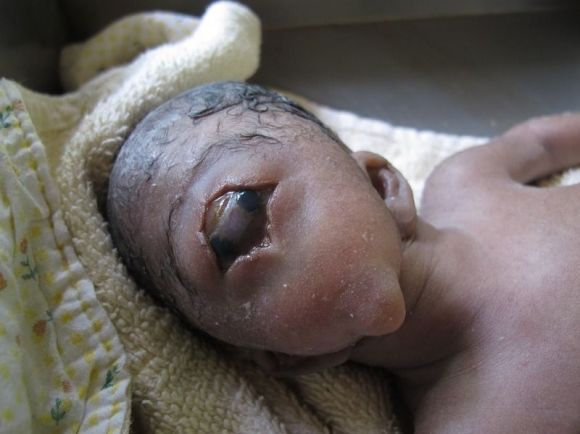
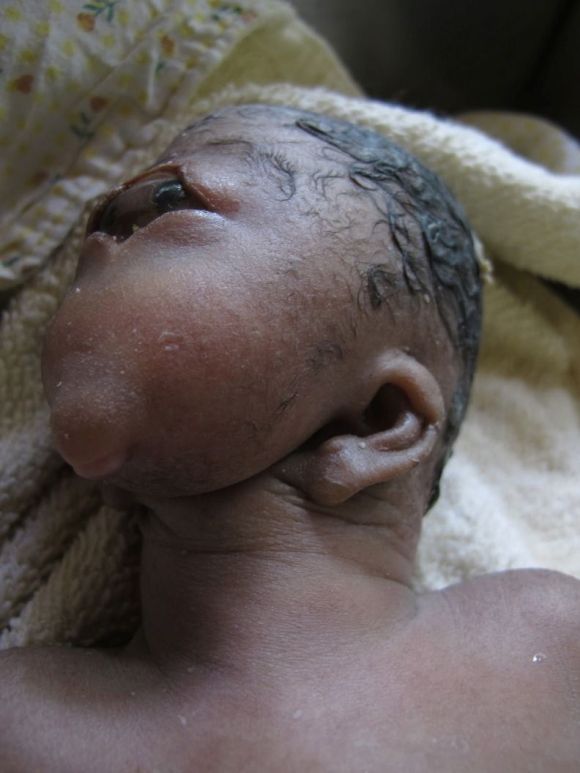
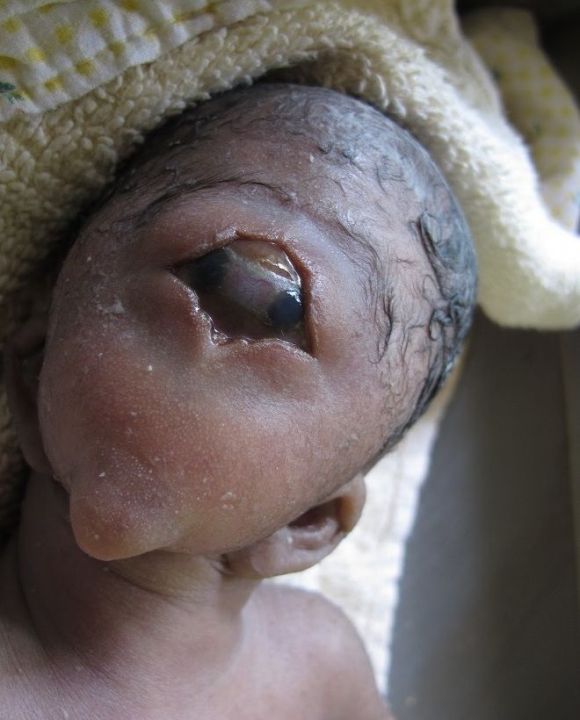
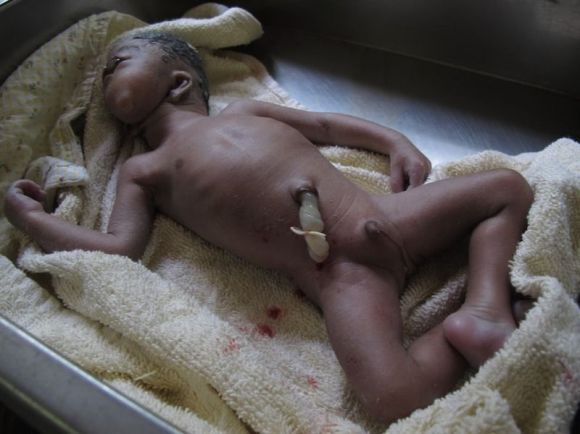
 Nurse in China dubbed “Angel Nurse” for breastfeeding child during major surgery
Nurse in China dubbed “Angel Nurse” for breastfeeding child during major surgery Woman delivers baby on passenger train just outside of Tokyo
Woman delivers baby on passenger train just outside of Tokyo 6 surprising things about having a baby in Japan
6 surprising things about having a baby in Japan Crazy Japanese “doctor” thinks babies live in clouds, choose their mothers from the heavens
Crazy Japanese “doctor” thinks babies live in clouds, choose their mothers from the heavens Totoro sequel anime, Mei and the Baby Catbus, to screen at Ghibli theme park this fall
Totoro sequel anime, Mei and the Baby Catbus, to screen at Ghibli theme park this fall The mystery destination of the SoraNews24 end-of-year party left us speechless
The mystery destination of the SoraNews24 end-of-year party left us speechless The top 10 annoying foreign tourist behaviors on trains, as chosen by Japanese people【Survey】
The top 10 annoying foreign tourist behaviors on trains, as chosen by Japanese people【Survey】 Starbucks Japan’s Lucky Bag #3: A fukubukuro surprise we weren’t expecting
Starbucks Japan’s Lucky Bag #3: A fukubukuro surprise we weren’t expecting The etiquette rules for visiting Shinto shrines in Japan
The etiquette rules for visiting Shinto shrines in Japan Village Vanguard possibly tops its own record for most useless junk in a lucky bag this year
Village Vanguard possibly tops its own record for most useless junk in a lucky bag this year We meet again – Mister Donut teams up for new round of gourmet donuts with famed chocolatier
We meet again – Mister Donut teams up for new round of gourmet donuts with famed chocolatier Sonic creator thanks fans for loving character so much that his ugly movie design will be changed
Sonic creator thanks fans for loving character so much that his ugly movie design will be changed There’s an official PlayStation lucky bag, but what’s inside?【Photos】
There’s an official PlayStation lucky bag, but what’s inside?【Photos】 Votes are in! Taiwan chooses its top 5 girls’ school uniforms【Photos】
Votes are in! Taiwan chooses its top 5 girls’ school uniforms【Photos】 What happens when you cook beer with potato chips in a rice cooker?
What happens when you cook beer with potato chips in a rice cooker? Hayao Miyazaki says Happy New Year to Studio Ghibli fans with new art for Year of the Snake
Hayao Miyazaki says Happy New Year to Studio Ghibli fans with new art for Year of the Snake McDonald’s Japan has a fukubukuro lucky bag that everyone wants to get their hands on
McDonald’s Japan has a fukubukuro lucky bag that everyone wants to get their hands on What’s in Starbucks Japan’s fukubukuro lucky bag for 2025?
What’s in Starbucks Japan’s fukubukuro lucky bag for 2025? Let’s go open a Lego Japan lucky bag…o
Let’s go open a Lego Japan lucky bag…o Square Enix releases a Final Fantasy fukubukuro lucky bag for New Year’s in Japan
Square Enix releases a Final Fantasy fukubukuro lucky bag for New Year’s in Japan Animate Akihabara releases a lucky bag for the first time in years, and it’s amazing
Animate Akihabara releases a lucky bag for the first time in years, and it’s amazing Kura Sushi has secret menu items in Japan, and here’s how to find them
Kura Sushi has secret menu items in Japan, and here’s how to find them Pokémon fans aren’t happy with the Mister Donut fukubukuro lucky bag for 2025
Pokémon fans aren’t happy with the Mister Donut fukubukuro lucky bag for 2025 The perfect budget-friendly hot spring hotel near Narita Airport
The perfect budget-friendly hot spring hotel near Narita Airport Bear breaks into house in Japan, quickly begins spending winter exactly like Japanese people do
Bear breaks into house in Japan, quickly begins spending winter exactly like Japanese people do Starbucks Japan is calling it quits with paper straws
Starbucks Japan is calling it quits with paper straws Japanese company develops classy heavy metal band frames for glasses
Japanese company develops classy heavy metal band frames for glasses This downtown Tokyo cafe is like a time machine that takes you back 50 years into the past
This downtown Tokyo cafe is like a time machine that takes you back 50 years into the past Station of despair: What to do if you get stuck at the end of Tokyo’s Chuo Rapid Line
Station of despair: What to do if you get stuck at the end of Tokyo’s Chuo Rapid Line Starbucks Japan reveals new winter holiday goods to wrap up 2024
Starbucks Japan reveals new winter holiday goods to wrap up 2024 McDonald’s new Happy Meals offer up cute and practical Sanrio lifestyle goods
McDonald’s new Happy Meals offer up cute and practical Sanrio lifestyle goods Foreign tourists on Shinkansen bullet train break suitcase etiquette, angering local passengers
Foreign tourists on Shinkansen bullet train break suitcase etiquette, angering local passengers Possessing Harry Potter’s Sword of Godric Gryffindor is now illegal in Japan
Possessing Harry Potter’s Sword of Godric Gryffindor is now illegal in Japan [Deleted] Article written for April Fool’s Day 2018
[Deleted] Article written for April Fool’s Day 2018 Japanese government to make first change to romanization spelling rules since the 1950s
Japanese government to make first change to romanization spelling rules since the 1950s Foreigner’s request for help in Tokyo makes us sad for the state of society
Foreigner’s request for help in Tokyo makes us sad for the state of society Japanese convenience store Family Mart announces abolishment of eat-in spaces
Japanese convenience store Family Mart announces abolishment of eat-in spaces Life-size vibrating Legend of Zelda Master Sword for sale from Nintendo【Photos】
Life-size vibrating Legend of Zelda Master Sword for sale from Nintendo【Photos】 Princesses, fruits, and blacksmiths: Study reveals the 30 most unusual family names in Japan
Princesses, fruits, and blacksmiths: Study reveals the 30 most unusual family names in Japan Studio Ghibli releases free-download board game — Here’s how to play it without reading Japanese
Studio Ghibli releases free-download board game — Here’s how to play it without reading Japanese Japanese mother shares her baby bed wisdom: you can use storage boxes!
Japanese mother shares her baby bed wisdom: you can use storage boxes! Teeny tiny giant panda baby born in Japan【Photos】
Teeny tiny giant panda baby born in Japan【Photos】 Woman in Tokyo gives birth onboard one of Japan’s busiest train lines
Woman in Tokyo gives birth onboard one of Japan’s busiest train lines Nara Park’s first baby deer of the year has been born, is totally adorable【Video】
Nara Park’s first baby deer of the year has been born, is totally adorable【Video】 Thai mother endures more than 30 hours of labor to deliver stillborn baby in the name of science
Thai mother endures more than 30 hours of labor to deliver stillborn baby in the name of science Newborn baby sand cat totally melts hearts across Japan【Video】
Newborn baby sand cat totally melts hearts across Japan【Video】 Japanese mom finds dead dad’s Amazon cart has one last message of love for his grandchildren
Japanese mom finds dead dad’s Amazon cart has one last message of love for his grandchildren UNICEF: Japan safest country to have a baby
UNICEF: Japan safest country to have a baby Does this “Mother Milk” eau de toilette really smell like a newborn baby? We ask a baby
Does this “Mother Milk” eau de toilette really smell like a newborn baby? We ask a baby Newborn baby capybaras and proud mama pose for pictures at Nagasaki Bio Park 【Photos】
Newborn baby capybaras and proud mama pose for pictures at Nagasaki Bio Park 【Photos】 Baby Chanco: The Japanese baby with a full head of thick, lustrous hair
Baby Chanco: The Japanese baby with a full head of thick, lustrous hair Popular Japanese treat Tokyo Banana gets special makeover for baby panda’s debut at Ueno Zoo
Popular Japanese treat Tokyo Banana gets special makeover for baby panda’s debut at Ueno Zoo Pregnant Japanese woman’s ultrasound looks eerily like a character from anime Dragon Ball Z
Pregnant Japanese woman’s ultrasound looks eerily like a character from anime Dragon Ball Z Kyoto Animation arsonist develops a soft spot for nurse treating him at hospital
Kyoto Animation arsonist develops a soft spot for nurse treating him at hospital
Leave a Reply